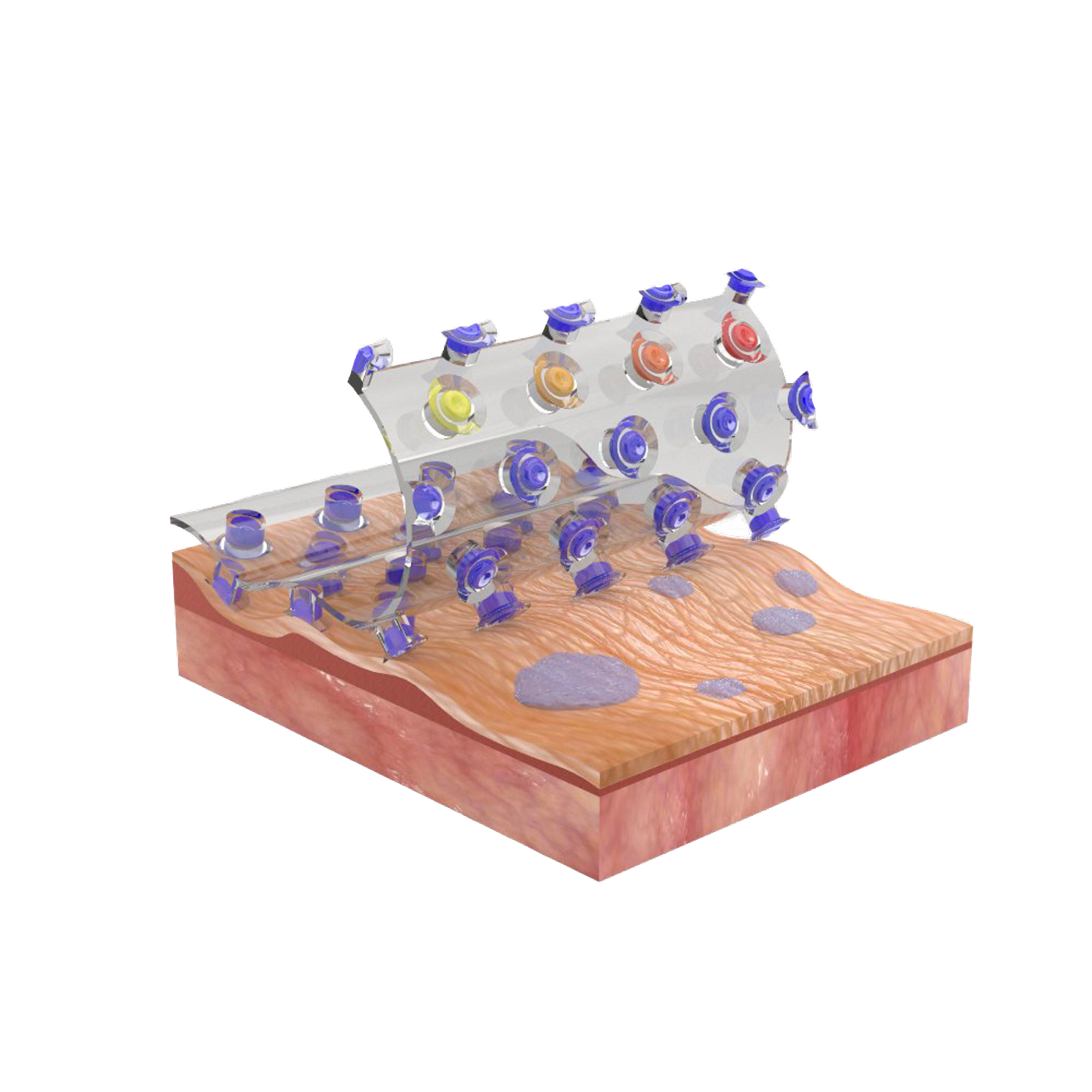Stick-on Diagnostic Patch Inspired by Beetles
Schematic illustration of the adhesive patch with diving beetle–inspired suction chambers against rough and wet human skin. ©McGill University
Scientists developing advanced technologies for personalized skincare have turned to an unconventional source of inspiration: the male diving beetle. Researchers at McGill University have created a device that captures and monitors biomarkers on the skin's surface, creating opportunities for skin disease diagnostics with unprecedented accuracy.
Existing techniques that diagnose dermatological conditions in a non-invasive manner have many critical limitations—they're difficult to use, prone to errors, and require expensive analytical techniques to interpret results. In addition, they often use glues that can irritate or even hurt skin during the diagnostic process. Keeping these devices stuck onto anatomical locations such as knees and elbows or wet skin is also virtually impossible.
Nature holds clues to overcoming these hurdles. Male diving beetles, or Hydaticus pacificus, are carnivorous insects that are well adapted to life in an aquatic environment. These animals use tiny, sticky hairs on their front legs called setae to hold on to their mates underwater. A microscopic view of setae reveals a series of structures that look like mini suction cups, allowing the beetles to latch onto irregular, wet surfaces with ease.
Using setae as a template, researchers created a device with cavities containing color-changing hydrogels that suck out body fluids from the skin and monitor their pH levels. The team made their own software to automatically interpret color changes (based on skin acidity levels) by integrating machine learning algorithms. The team sees the core technology used in various medical devices, including at-home diagnostic skin patches, adhesives in dressings, and stick-on skin treatments.









